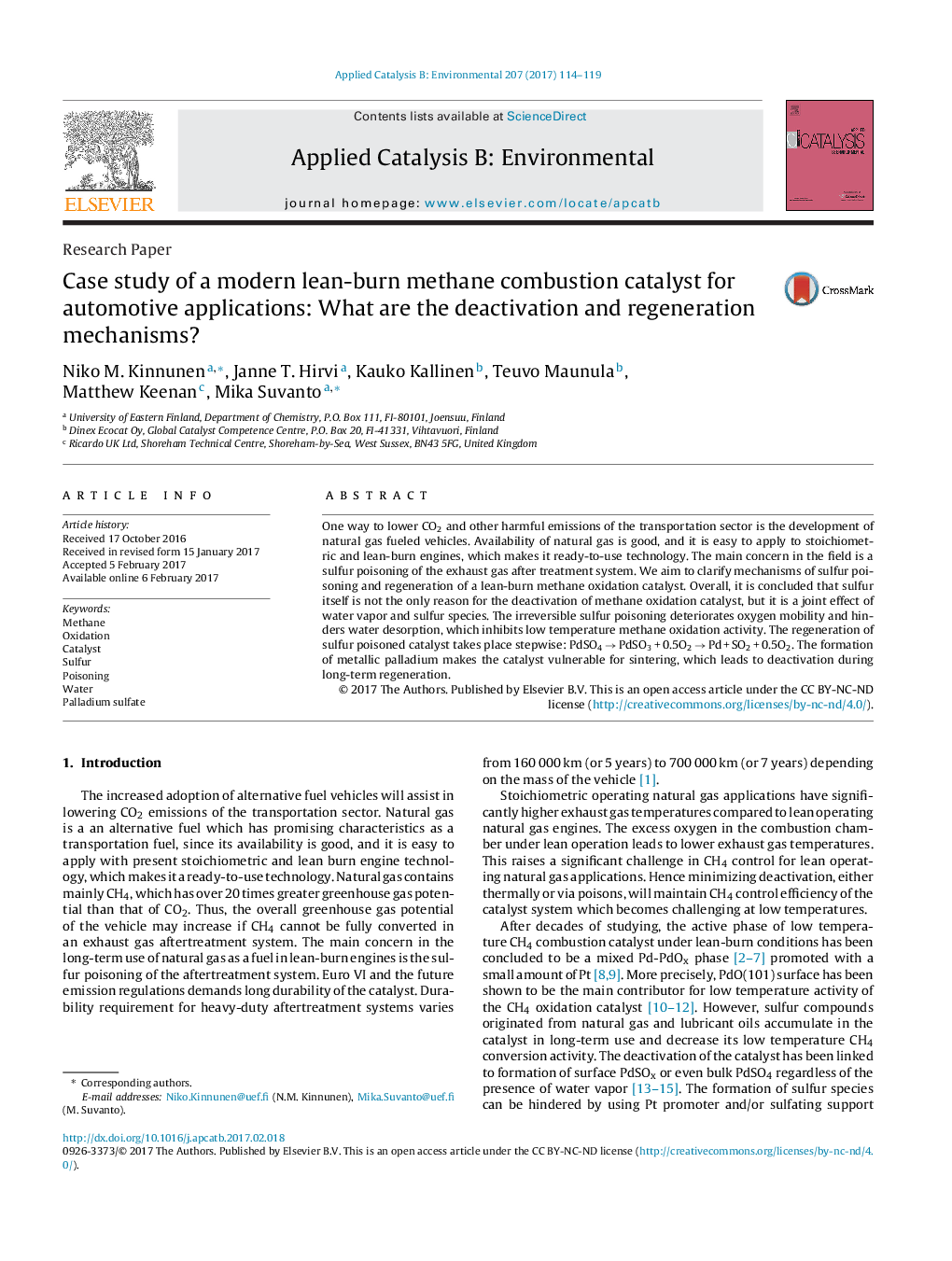| Article ID | Journal | Published Year | Pages | File Type |
|---|---|---|---|---|
| 6454053 | Applied Catalysis B: Environmental | 2017 | 6 Pages |
â¢Sulfur poisoned CH4 oxidation catalyst is active in dry gas feed.â¢Deactivation of lean-burn CH4 oxidation catalyst is a joint effect of SO2 and water.â¢PdSO4 model catalyst mimics the performance of sulfur poisoned catalyst.â¢PdSO4 decomposes during regeneration in two steps forming metallic palladium.â¢Metallic palladium exposes the catalyst for sintering and permanent loss of activity.
One way to lower CO2 and other harmful emissions of the transportation sector is the development of natural gas fueled vehicles. Availability of natural gas is good, and it is easy to apply to stoichiometric and lean-burn engines, which makes it ready-to-use technology. The main concern in the field is a sulfur poisoning of the exhaust gas after treatment system. We aim to clarify mechanisms of sulfur poisoning and regeneration of a lean-burn methane oxidation catalyst. Overall, it is concluded that sulfur itself is not the only reason for the deactivation of methane oxidation catalyst, but it is a joint effect of water vapor and sulfur species. The irreversible sulfur poisoning deteriorates oxygen mobility and hinders water desorption, which inhibits low temperature methane oxidation activity. The regeneration of sulfur poisoned catalyst takes place stepwise: PdSO4 â PdSO3 + 0.5O2 â Pd + SO2 + 0.5O2. The formation of metallic palladium makes the catalyst vulnerable for sintering, which leads to deactivation during long-term regeneration.
Graphical abstractDownload high-res image (80KB)Download full-size image
